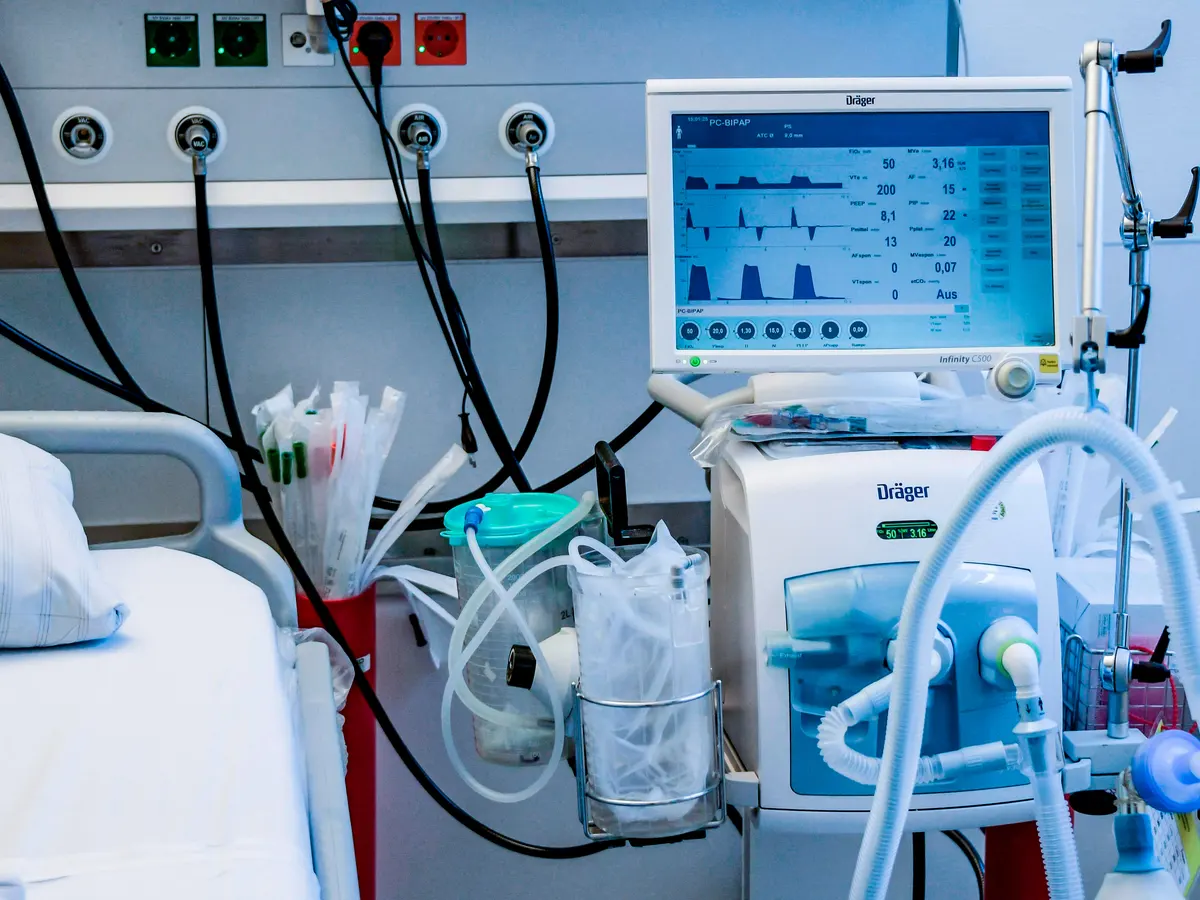Ventilator care facility or mechanical ventilator is a device that is used to assist breathing of patients who cannot breathe normally. Doctors decide to put a patient on such machines when patient is totally or even partially unable to breathe using his natural breathing organs. Basic function of ventilator care facility is to pump air inside the lungs while using tube passing down the trachea via throat so that he could breathe to survive.
Air is not the only factor which is controlled by ventilators but there are many other functions like humidity, temperature, volume and pressure control which are must for controlling breathing and oxygen level of the patient. All these features overall make a ventilator good breathing care equipment.
Here comes a list of some basic and advanced features which are supposed to be a must part of any ventilator whether it is a simple breathing machine or an advanced mechanical ventilator.
Basic Features of Ventilator Machine
Basic function of any ventilating machine is to ease the process of breathing without intervention of lungs and natural breathing system. For reason every ventilator is equipped with some basic components including a set of tubes, oxygen supplies, humidifier, air turbine and disposable circuit.
Air Turbine
An air turbine is one the basic parts of the ventilating machine which is designed to deliver room air or mixture of air and oxygen, blended oxygen, to the ventilated patient. The air turbine fulfills its function using set of attached tubes with the machine and disposable patient circuit passing down the trachea by way of the patient’s throat.
Humidifier
A tube is passed through the throat of the patient down to the trachea in order to provide ventilation. This tube is more likely to cause dryness in the throat and so do irritation, coughing and in some cases throat infection. To avoid such health issues humidifier is considered the must have part of any ventilator. A humidifier adds humidity to the dry gas inhaled through ventilators which not only eases breathing but also prevents secretion retention and blockage inside the tracheal tube.
Advanced Features of Good Ventilator Machine
Pump air in the lungs is not solely enough to provide patient desired level of oxygen rather there are many other control systems that work together to achieve basic function of a ventilator. These features have specialized settings and can be controlled by either paramedic staff or respiratory therapists. This is the reason medical staff in the hospital is properly trained to manage these controls and respond promptly and accordingly in case of emergency. Proper training of ventilating care facility as well as its controls is also part of the education of the respiratory therapists.
Alarm Triggers
Ventilators serve as a lifesaving mechanism; however, inefficiency or failure of this equipment can threaten the life of the person using this facility. Taking this risk into consideration a safety mechanism in the form of alarms is added in ventilators that triggers in case the system fails or malfunctions. Basic purpose of these alarm controls is to avoid any delay in the oxygen supply or other potential risk to the patient.
Basic alarm triggers installed in ventilators are
Power Alarm
Power alarm as the name indicates, reports in case of power failure of the system. Power alarms are automatically triggered whenever ventilators are low in battery or gas pressure reaches an insufficient level. This alarm trigger gives an early indication to the doctors or attendant of the patient to manage power supply before the machine shuts down.
- Have You Read: Issues Related To Weaning off Patient From Ventilator
Output Alarms
Ventilators are designed not only to provide artificial breathing but also to maintain a certain level of air volume, pressure, flow and respiratory rate. Ventilators are featured with a special system to alarm about any variation in pressure, volume or flow of air. This alarm trigger is very handy in providing controlled supply of oxygen to the ventilated patient.
Control Error Trigger
The purpose of ventilator dies when the system fails to function properly. Thence a trigger is added to the ventilators that notifies control errors like incompatible ventilators settings, circuit cooler or turbine fan failure or even inappropriate gas supply.
Automated Safety Features
The attendant of the long-term ventilated patient, in most of the cases, is not a trained professional but some friend or family member. This person is prone to negligence which can lead to some severe consequences in the form of total collapse of respiratory system to even sudden death of the patient. Keeping this severity in mind, long-term ventilating facilities are provided with some automated safety features that can control critical events on their own. These features are hardcoded so cannot be changed or turned off.
Two automated safety features which are more desirable or necessary for ventilators are anti-asphyxia valve and pressure relief vent.
Anti-asphyxia Valve
Anti-asphyxia valve is a must have feature in long term mechanical ventilators that saves patients from suffocation in cases when there is no oxygen supply. This valve is specially designed that helps patients to inhale air inside the room when ventilator is out of supply or stops working suddenly.
Pressure Relief Vent
Pressure relief vent as its name suggests is one of the handy features that is designed to control gas pressure inside the circuit of the ventilating machine. This valve releases circuit gas into the air when inspiratory pressure reaches to some specific level.
Other Features of A Best Ventilator Facility Equipment
Along with the aforesaid basic and advanced features, ventilators also come with backup batteries and air compression systems in order to provide a continuous supply of oxygen.
Backup Batteries
Mechanical ventilators, being lifesaving machines, are supposed to function properly and continuously. For reason ventilators are backed up with batteries to avoid discontinuity in case of power failure. These batteries are though not capable of providing longer outage but are sufficient to maintain supply of oxygen for shorter power failure.
Air Compressor and Gas Tank
A ventilator is supposed to provide a continuous supply of air at a regulated pressure. Discontinuity of air to the ventilated patient can cause serious harm to the patient. To avoid such harm and ensure regular supply of air to the ventilated patients, ventilators generally come up with gas tanks, air compressors and manual backup system.


